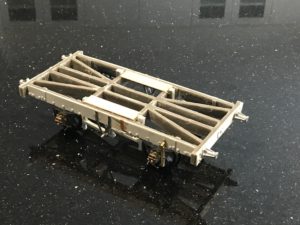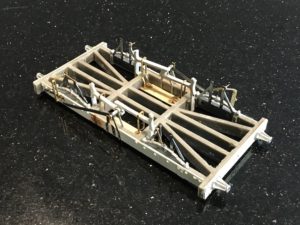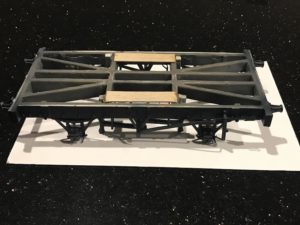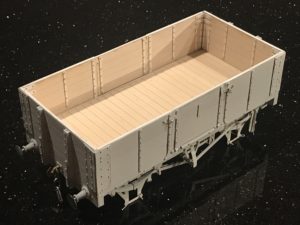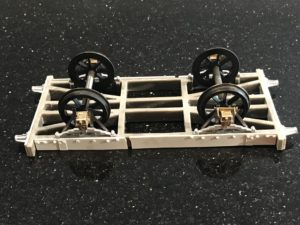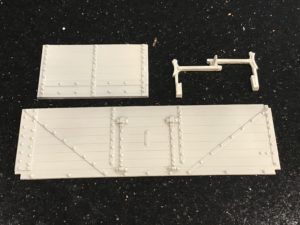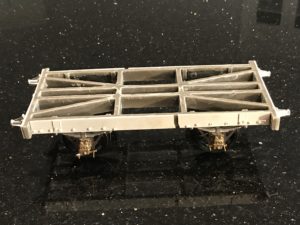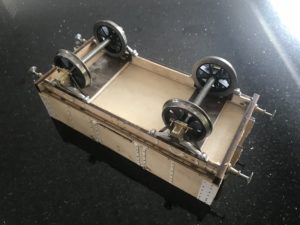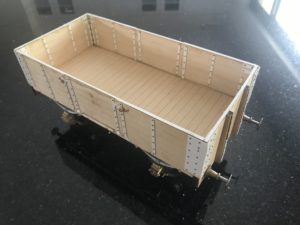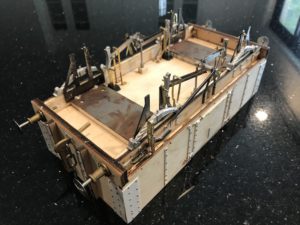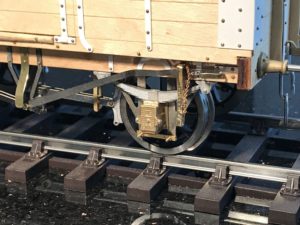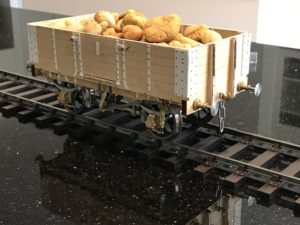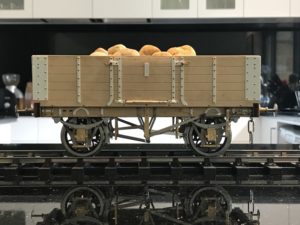-This other wagon is a model of a Railway Clearing House (“RCH”) design from 1923, the model produced as I’ve previously said, by Mike Williams.
I have now put most of the underframe together, as this shows: the brake gear is on, and the springs, etc.
The details go together quite well, and although I have had a little more trouble than with more expensive kits, by the time this is done I think it will look fine, and it is only about 60% of the price!
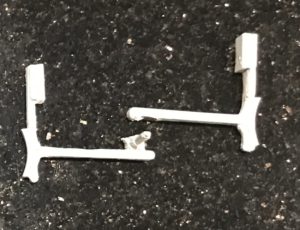 F
F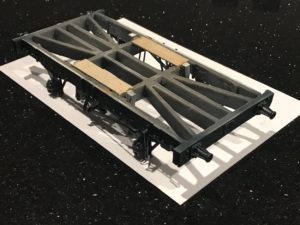 or instance the brake gear, instead of being made of individual components (as in more elaborate (and expensive) kits, is a single resin moulding. The brakes on this moulding did not line up properly with the wheels so I had to saw the moulding in two, then fit it to the underframe. It will look fine once painted, so this really isn’t a major problem.
or instance the brake gear, instead of being made of individual components (as in more elaborate (and expensive) kits, is a single resin moulding. The brakes on this moulding did not line up properly with the wheels so I had to saw the moulding in two, then fit it to the underframe. It will look fine once painted, so this really isn’t a major problem.
I’ve now had a chance to put on the “primer”, and as this is black, it will do well as the final colour also, I’m hoping ….
This actually shows one of the ways in which this kit has been “a little more trouble”: given that there is no floor, there was nowhere to fix the brake safety straps to, so I had to add the strips of balsa wood which you can see. Not a major problem either, of course.

